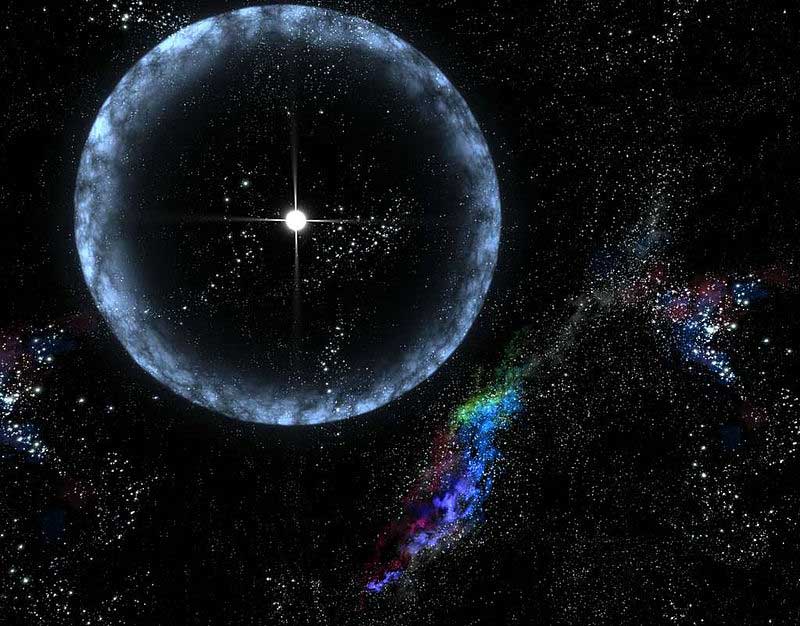Neutron Stars - As Heavy as our imagination can get

Stating that outer space is bizarre would be a serious understatement. There are so many things about the Universe that we don’t fully understand and some of the new discoveries continue to amaze us by the day. One such part of our infinite Universe is what the scientists call a Neutron star.
Probably one of the most fantastical and awe-inspiring events of the Universe is the supernova – a blinding explosion triggered by the disintegration of the core of a star. This could happen due to the slow burning out of massive stars (much bigger than our Sun) or due to fallout in the binary system of stars. It is predicted that the heavier elements of nature like Gold, Platinum are basically a result of supernovas. But what’s interesting is that what happens after a supernova. What happens after, challenges the limits of human imagination and our scientific capability to explain certain things about the Universe. The supernova could result into a black hole, something so massive and with such intense gravitational pull that not even light can escape that pull. In other instances, a small star – like body is formed, called the Neutron star and these Neutron stars continue to puzzle scientists to this date. Shockingly small in size (with a radius barely of 12-19km), these Neutron stars have an astronomical value of density, almost as dense as the nucleus itself which makes its gravitational pull to be so strong that trying to lift an arm on a Neutron star would require as much effort as climbing Mt. Everest.
The energy released during a supernova effectively melts the protons and electrons into neutrons, thus forming what we call a Neutron star. In a simple application of conservation of angular momentum, the Neutron stars being too small in size rotate very fast (several times a second) making them a standout existence in our Universe.
The existence of Neutron stars was predicted in 1934 by Walter Baade and Fritz Zwicky, a year after the discovery of the neutron by James Chadwick. They correctly predicted that supernovas convert stars into a mass of closely packed neutrons and this was discovered years later when advanced technology helped us have a look at these stars for ourselves.
Neutron stars are themselves of two types and this is where things get really interesting. Pulsars are the more frequent breed of Neutron stars and they are kind of like the lighthouses of our Universe. Basically emitting light in a periodic process, Pulsars’ pulsating light signal is detectable over long ranges and this is what has enabled scientists to discover these stars, right at the edge of our Milky Way galaxy.
Another kind of Neutron stars that constitute a part of our bizarre space is the Magnetar. With a rotation speed lesser than that of a Pulsar, a Magnetar does not radiate energy in the form of light in a periodic way. Instead it releases tremendous magnetic energy in uncontrolled short busts which gets transmitted in the form of gamma rays and X – rays. These uncontrolled short bursts of pure energy put up a spectacular show, even if the instability of a Magnetar makes it look like something right out of a sci-fi movie. The magnetic field of a Magnetar is astonishingly strong that the small size of this celestial body is not capable enough to hold this energy, leaving the neighboring bodies subject to a Magnetar’s rage.
Our Sun is smaller and younger than most of these other stars and its supernova is not due for more than a billion years from now. However, when it does, it is expected to pulverize the neighboring planets but what exactly would follow the supernova, no one can accurately predict. Maybe a black hole would be formed, sucking up the far away planets of the Solar System as well, or maybe a Neutron Star which might result in the collision of planets like Uranus and Neptune to collide into the Neutron Star, thus creating a brilliant mess of the surroundings (which obviously none of us would be here to witness). But exactly what kind of Neutron star? The scientists may have solved this mystery.
Very recently, scientists discovered a Neutron star which was pretty much hybrid of a Pulsar and a Magnetar. It radiated in a periodic way and also had a magnetic field so strong that it could not sustain that energy, thereby emitting a tremendous amount of gamma and X rays. It was also much younger than most of the Neutron stars that they had discovered yet and this led to the hypothesis that a Neutron star starts out as a Magnetar, and then with due course of time, settles down to being a Pulsar. The hybrid star was probably in the intermediate stage, and thus exhibited the properties of both the kinds of Hybrid Stars.
Gravity is a force which has never been fully understood by the world’s scientists. Neutron stars, having such massive gravitational pull, could be the key to understanding the fundamentals of gravity – What exactly is the reason behind the gravitational pull between two non – massless bodies? The unification of the fundamental forces of nature could not be done because gravity as a whole could never be fully understood. Maxwell, Faraday and every scientist hence have failed to explain gravity and its relation with the other fundamental. Now, something called the String theory has come up to answer all those questions that we have. Maybe one day we would be able to properly explain what all Universal laws govern us. But till then proper observation of space elements, like the Neutron stars, would most definitely make us more adept towards making that long due discovery.
After all, with that much gravitational pull, we are bound to be attracted to Neutron stars!